Art & Exhibitions
How the New Museum’s Triennial Sabotages Its Own Revolutionary Mission
What's all this talk of propaganda?
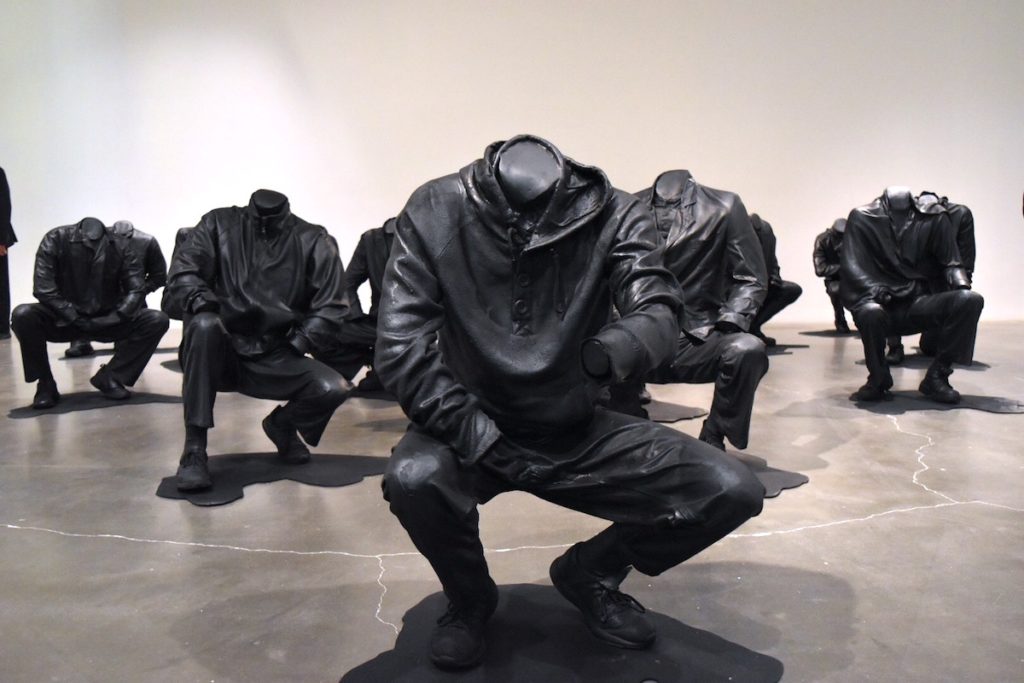
What's all this talk of propaganda?

Ben Davis

There’s plenty to like in “Songs for Sabotage,” the New Museum’s just-opened Triennial. I think of Wilmer Wilson IV’s inventive compositions on door-sized wood panels, featuring dense, rippling patterns of staples; or Wong Ping’s offbeat digital animations, fractured fairytales for a digital generation; or Dalton Paula’s earth-toned paintings, showing spare, unreal arrangements of votive objects, which grow more subtly strange the longer you look at them.
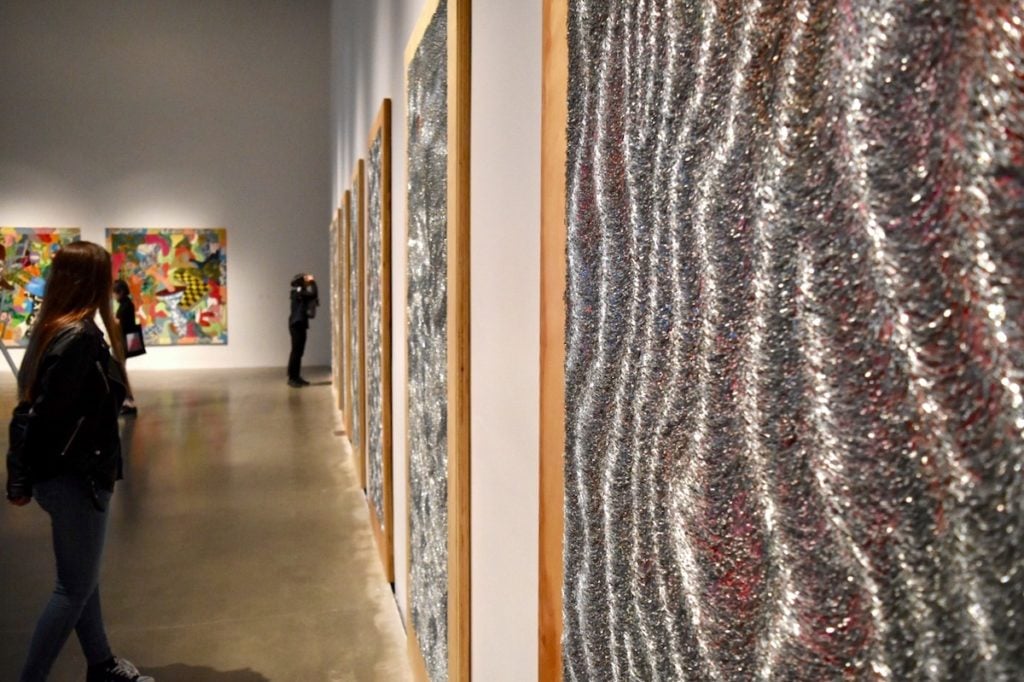
Installation view of works by Wilmer Wilson IV in the New Museum Triennial 2018. Image courtesy Ben Davis.
One artist, though, seems to have provided a kind of manifesto for her curators, in artwork form.
That is Claudia Martínez Garay, present via two wall reliefs. Each seems to be a constellation of free-floating symbols, one consisting of a variety of different bold, wheeling geometric patterns, the other of different cartoon icons: a vulture, an octopus, two different snakes being throttled by hands.
This is a kind of political spin on appropriation art. Martínez Garay has summoned together a century’s worth of political graphics from around the world, broken them down into their component parts, then put them into abstracted relationship with one another, divorced from their original message.
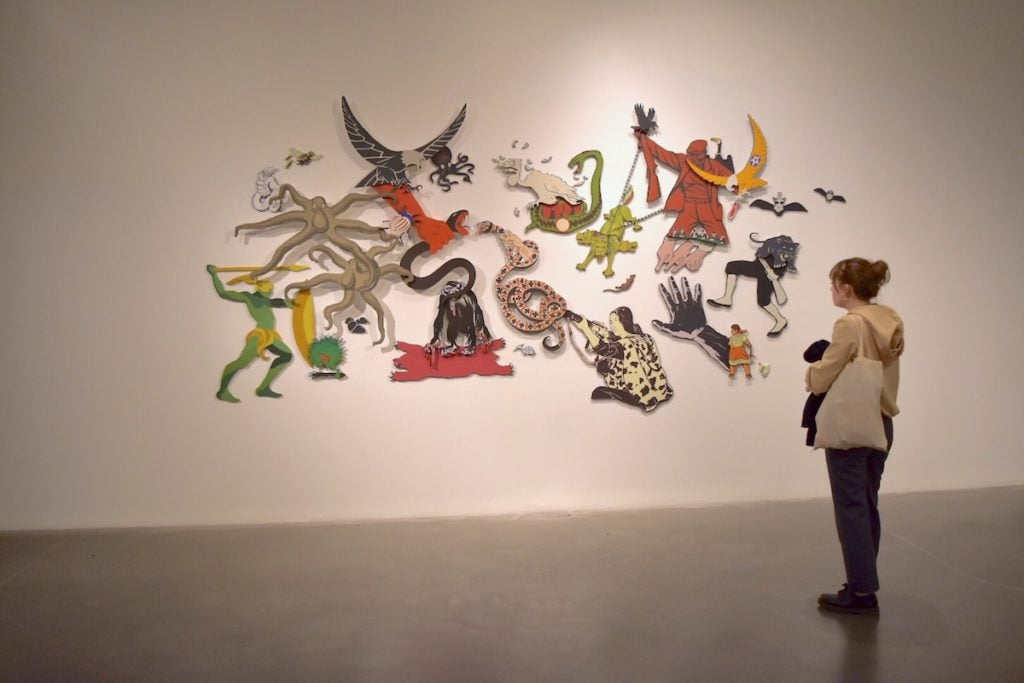
Installation view of Claudia Martinez Garay in “Songs for Sabotage.” Image courtesy Ben Davis.
It’s a clever gesture—maybe a little too clever to cut deeply. I recognize some of the symbols Martínez Garay invokes (the pouncing tiger of the Black Panther Party for Self-Defense). Most I don’t. In any case, her project represents the punchy urgency of political propaganda reduced to a decontextualized aesthetic sensibility by its translation to the gallery.
To me, that speaks to the condition, and the dilemma, of this show overall. Because “propaganda” is a key word in the “Songs for Sabotage” lexicon.
“Art is a part of the infrastructure in which we live and, if successful, might operate as propaganda,” curator Alex Gartenfeld promised at the show’s opening, explaining its program.
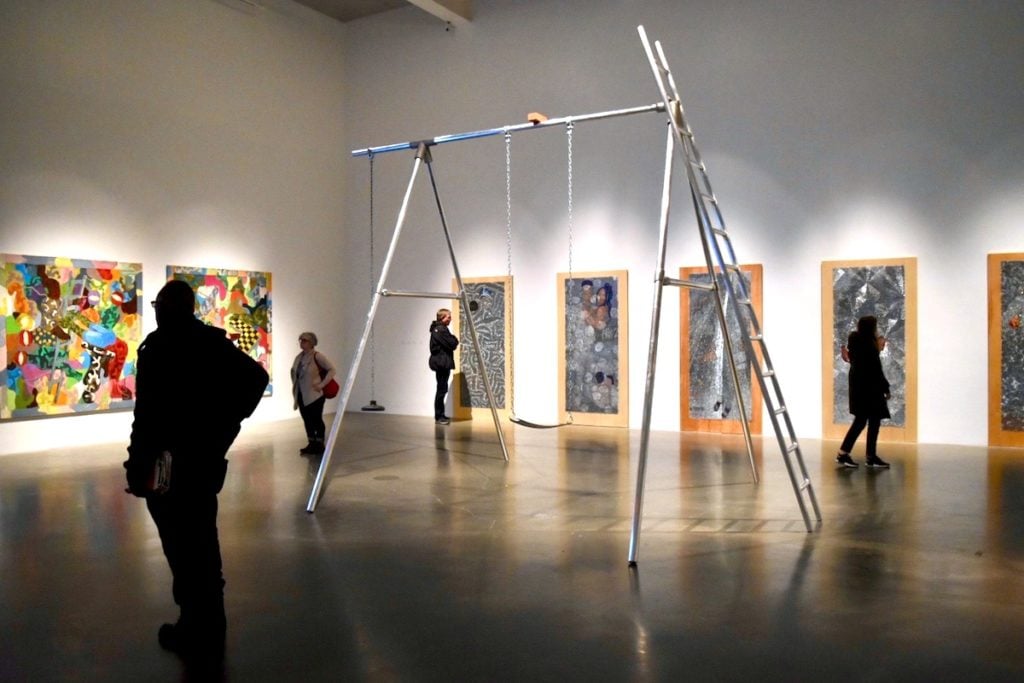
Installation view of “Songs for Sabotage.” Image courtesy Ben Davis.
My colleagues have already picked some of the best things from the exhibition. So I’ll just say a few words about the general intellectual architecture of “Songs for Sabotage.” To me, it feels like another case study for a contemporary art world that is working through the impasse of the biennial/triennial form in the present.
This is the fourth edition of the New Museum Triennial, an event meant to offer a snapshot, every three years, of the energies of a rising generation of artists. It has typically had a pronounced global emphasis, setting it apart from the Whitney Biennial, which focuses on US artists.
Surveying the concerns of an international art scene is a perilously immense brief. Yet “Songs for Sabotage” is modest, as these surveys go. Gartenfeld and his co-curator, Gary Carrion-Muriyari, have brought to the table just half the number of artists (30) of the previous edition, “Surround Audience” of 2015.
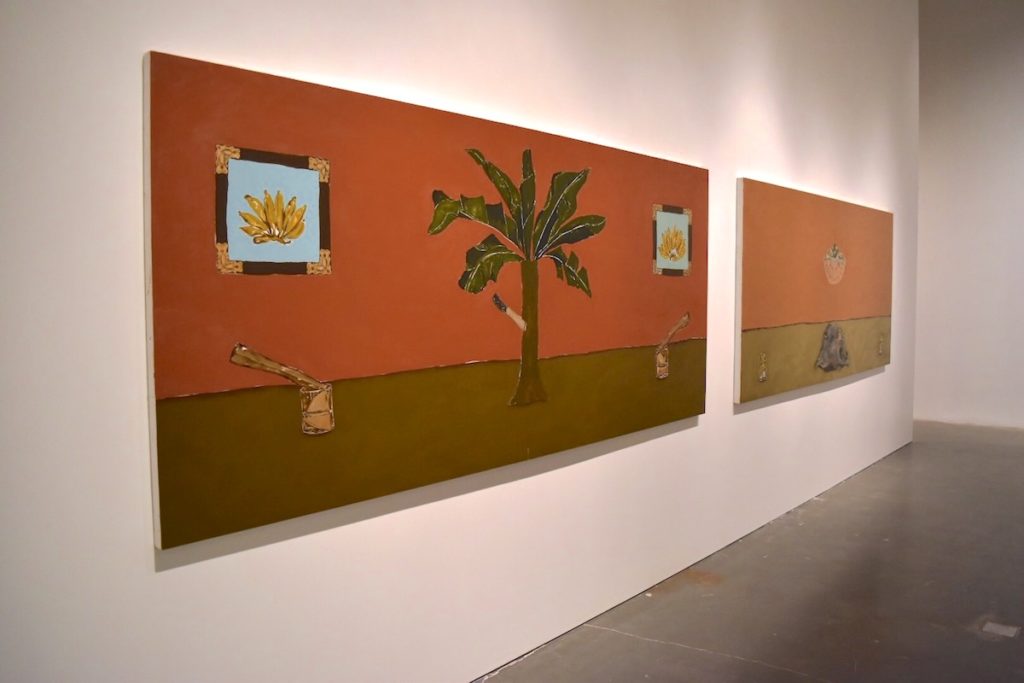
Installation view of paintings by Dalton Paula in the New Museum Triennial 2018. Image courtesy Ben Davis.
From an audience-experience perspective, this makes the three floors (and change) of the show feel focused on individual voices, which is welcome. In the catalogue the curators stress the value of “localized gestures, actions, and dialogues” as part of their vision for the exhibition. They have also eschewed selecting anybody with a big international reputation.
The show, essentially, tries to be at once broad enough to feel meaningfully reflective of a modern-day, networked, globalized, post-colonial world—and to avoid the criticism of being parochially Western, white, or market-oriented—while also being focused enough not to let the whole overwhelm the parts. (Curator Adam Szymczyk’s recent documenta went in the other direction, trying to tackle the impossible task of reflecting a decentered global perspective by sprawling out, both intellectually and spatially, to the point of being willfully unreadable.)
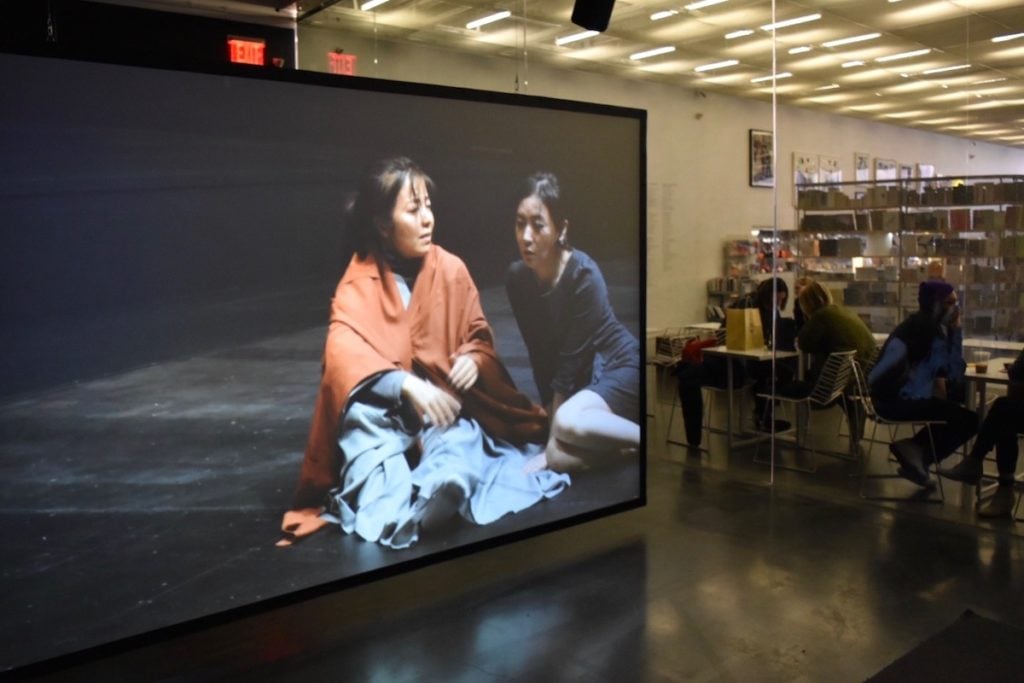
Installation view of Shen Xin’s Provocation of the Nightingale at the New Museum. Image courtesy Ben Davis.
Any biennial or triennial aspires to be an intellectual event. Gartenfeld and Carrion-Muriyari have built an elaborately serious intellectual apparatus around “Songs for Sabotage.” Its catalogue texts promise new, transformative contemporary models of artistic activity that “serve as calls to action against the systems of domination and exploitation characteristic of global capitalism today” and celebrate “new communities centered on those whose identity, agency, and mere existence pose a threat to business as usual.”
Much recourse is made to Stafano Harney and Fred Moten’s theoretical text The Undercommons. The latter is, in part, an attack on professional “critical” academics in favor of a new celebration of non-professional, un-professional, or anti-professional knowledge as a form of intellectual civil disobedience.
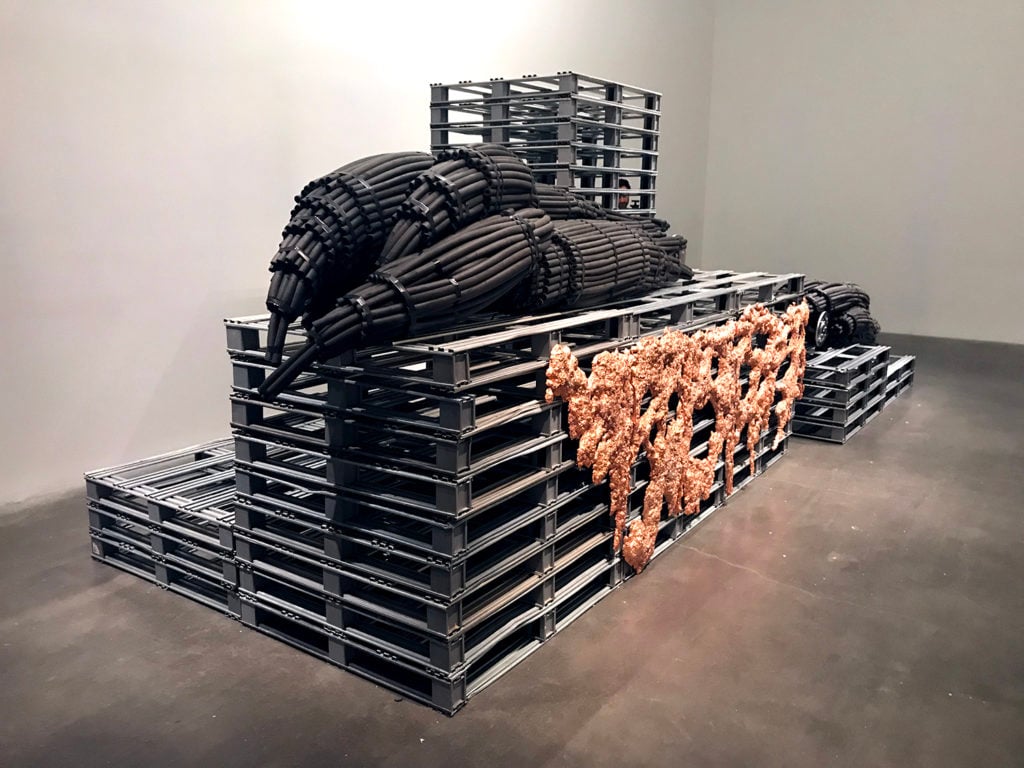
KERNEL, As you said, things resist and things are resistant (2018) at “2018 Triennial: Songs for Sabotage” at New York’s New Museum. Photo courtesy of Andrew Goldstein.
Keeping this inspiration in mind becomes kind of funny as you navigate “Songs for Sabotage,” because the show has the same sort of dutifully dense wall text that bedevils biennials of all kinds. The labels assume a viewer in easy command of words like “prosumer” and “axial”—or at least a viewer who imagines that they are the kind of person who should be; in short, someone who is conversant in exactly the “critical” culture you pick up in a university art theory course.
In fact, the obsession with the novel and the obscure, and a tendency to favor extravagant-but-abstract radical posturing, are actually two of the default complaints about international art festivals. You don’t need the “undercommons” concept to undergird this particular survey project; that is old wine in new bottles.
And the suspicion develops that the show’s high-flown rhetoric has served to blur rather than to sharpen the focus on the actual, admirably alternative interests of the show. Let’s just look at one case where this becomes clear.
In one gallery you find a collection of banners and slogans from the Indian artist Anupam Roy. These feature apocalyptically tortured bodies of strange hybrid figures rendered in stark, busy black and white, plus a variety of free-floating political slogans. As a whole, Roy’s project is titled “Surfaces of the Irreal.” A text describes it as “a barrage of media that expands the artist’s vision of a new political and social order in India.”
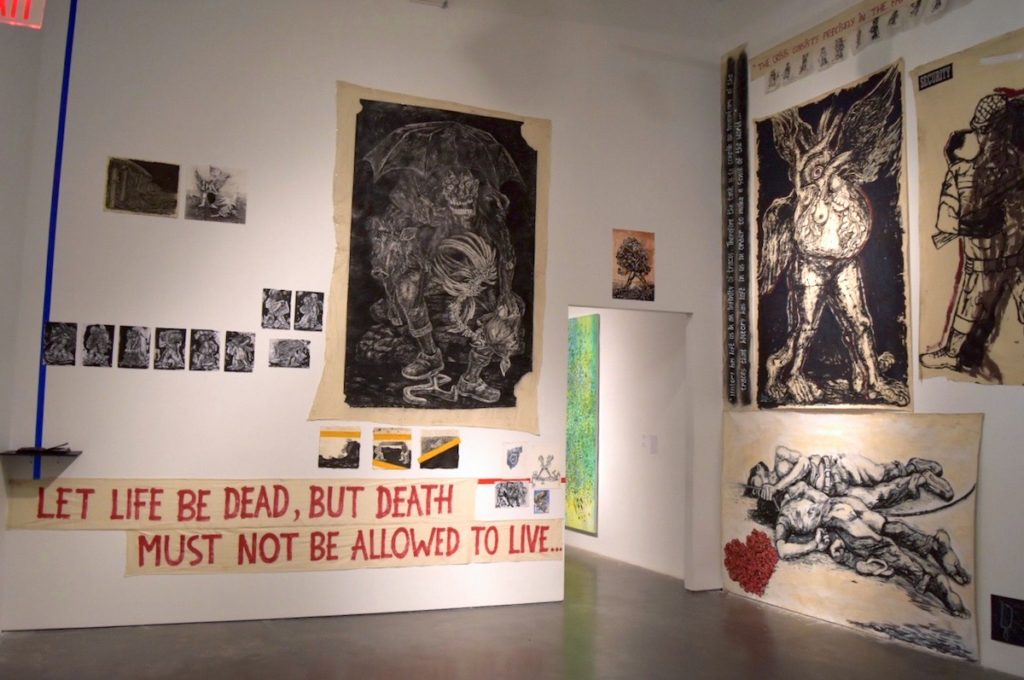
Installation view of Anupam Roy, “Surfaces of the Irreal.” Image courtesy Ben Davis.
But what kind of order is that? We are told Roy is an “activist as well as an artist.” We read that Roy opposes India’s current prime minister, the Hindu nationalist Narendra Modi, and is involved in struggles “concerning class, race, and gender in India at both the national and regional level” through his participation in the Communist Party of India (Marxist-Leninist) Liberation.
In this emphasis, you can see the show pushing to try to find some new kind of engaged perspective, maybe. But what does it all mean? Do you, as a viewer, feel familiar enough with India’s tangle of Maoist political organizations to understand what an allegiance to the Communist Party of India (Marxist-Leninist) Liberation possibly indicates?
“He seeks to create propaganda that advocates for a more equitable society,” we read. Well, I mean, we’d all like to see a more equitable society, wouldn’t we?
This inveterate vagueness drives me crazy.
If, as Gartenfeld suggested, one of the questions underlying “Songs for Sabotage” is how art, “if successful, might operate as propaganda,” then surely you have to also ask what the conditions for its success as propaganda are.
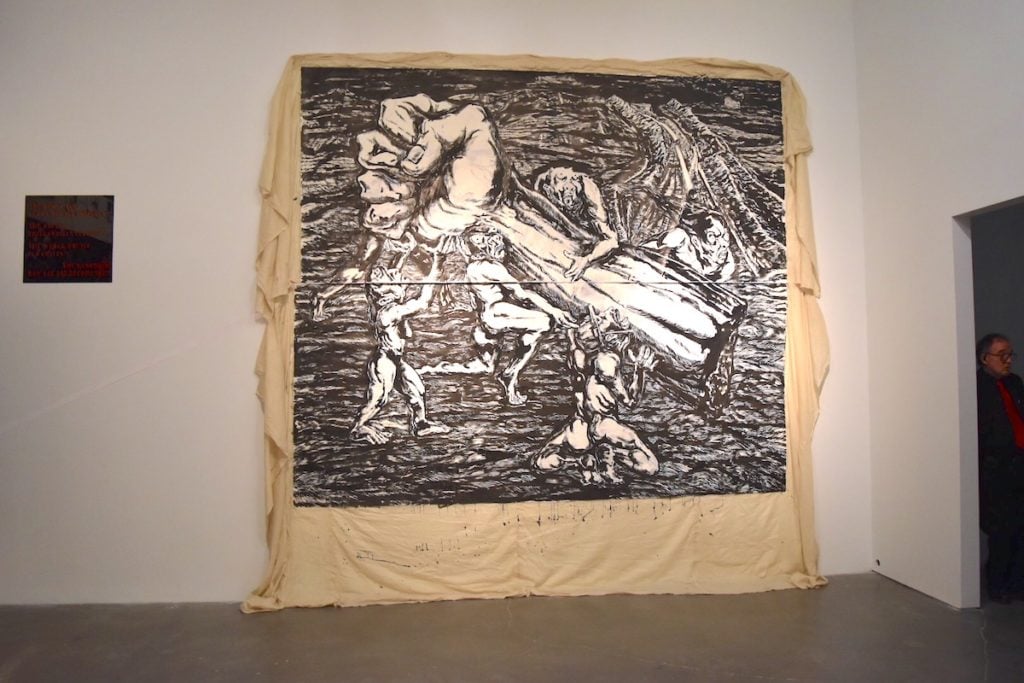
Installation view of Anupam Roy, “Surfaces of the Irreal.” Image courtesy Ben Davis.
Real propaganda is intimately concerned with the dynamics of context and audience. Politicians hire pricey consultants to figure out where to place messages, at what time, to what audience, under what conditions. Zillion-dollar industries are built on advertising micro-targeting operations and audience segmentation studies.
And yet when a museum takes up the cudgels to celebrate “propaganda” (or “the political,” that dire term), typically all these questions about context, audience, and efficacy drop away. And the actual fine-grained debates about program and strategy that make political organizing both hard and worthwhile vanish in some kind of nebulous celebration of “artist-activists.”
Here is what I think is happening: Globally, the political situation feels perilous and urgent. A sense of public relevance—which is what an event like the New Museum Triennial angles for—is going to depend not just on saying something about this sorry state of affairs, but saying something about it in a way that feels new and bold. That professional demand is what the trial balloons about new forms of “propaganda” and the like are about.
But the question of how really to present the actual stakes of different stances instead of just rendering them as signifiers of a remote righteousness, akin to the cavalcade of exploded cartoons in Claudia Martínez Garay’s work? That is not particularly resolved.
Towards the ceiling of Roy’s gallery, among all the other texts and images, there’s a long ribbon-like banner with a dangling, poetic statement: “The crisis consists precisely in the fact that the old is dying and the new cannot be born; in this interregnum, a great variety of morbid symptoms appears.”
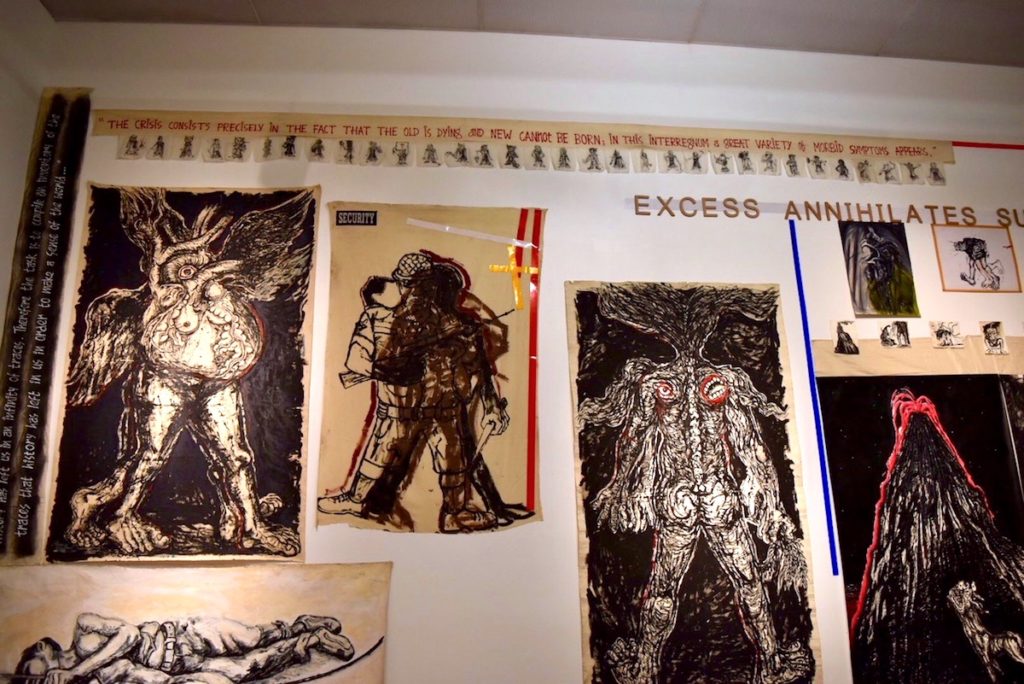
Installation view of Anupam Roy, “Surfaces of the Irreal.” Image courtesy Ben Davis.
That so happens to be one of the most famous quotes from the martyred Italian Marxist Antonio Gramsci (1891-1937). I know, more or less, what Gramsci meant by his “crisis,” situated as he was against the background of an ascendant Italian fascism. I don’t know what Roy means here, not specifically.
Still, in the context of “Songs for Sabotage,” the line feels like the exhibition could be commenting on itself. You can read the show’s texture as a whole as a kind of symptom, of a biennial culture that has the least conviction just where it promises the most, and knows it needs to become something else, but isn’t quite ready to go there yet.
“Songs for Sabotage” is on view at the New Museum in New York, through May 27.